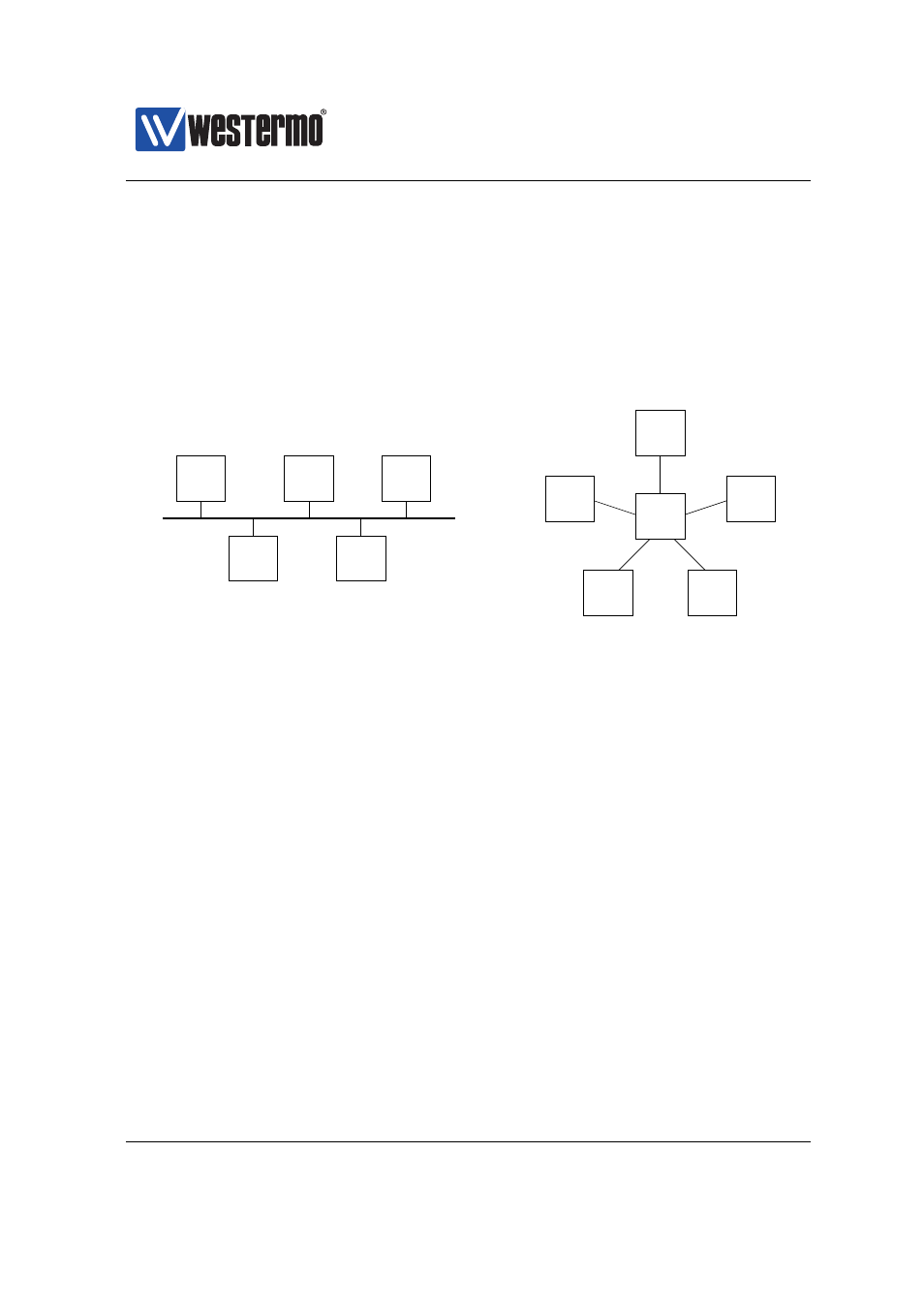Section 27.1.1.10 – Westermo RedFox Series User Manual
Page 613

Westermo OS Management Guide
Version 4.17.0-0
27.1.1.10
Designated OSPF router
In shared networks, such as Ethernets, there may be several routers attached to
the same LAN. Representing a LAN as a full mesh of links between the attached
routers may grow the OSPF database substantially if the number routers is large.
Instead, link state protocols, such as OSPF, treats a shared link as a logical star,
with a virtual node in the middle representing the shared network, see
. The
router which takes the role of network is referred to as the designated router.
a)
b)
R1
R4
R5
R2
R3
R2
R5
R4
R3
R1*
R1
(DR)
Figure 27.5: Link state protocols such as OSPF logically represent a shared link
(a) as a star (b). One of the attached routers (here R1), will take the role as
designated router and represent the ”network” in the middle.
The designated router (DR), as well as a backup designated router (BDR), are
elected automatically. If no node has been elected as DR or BDR, the router with
the highest configured DR election priority becomes the DR, using the router-id
as tie-breaker when more than one router has highest priority.
OSPF implements a sticky DR election scheme. Once a router has become DR, it
will keep that role even when a router with higher DR priority comes up. However,
a DR will give up its role if it discovers another router, which also consider itself
to be DR, and if that router has higher priority (with router-id as tie). Such a
situation could occur if a segmented LAN becomes connected.
➞ 2015 Westermo Teleindustri AB
613